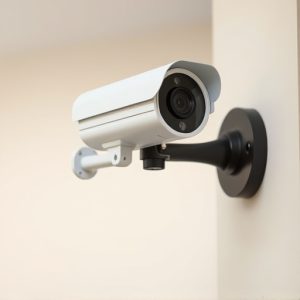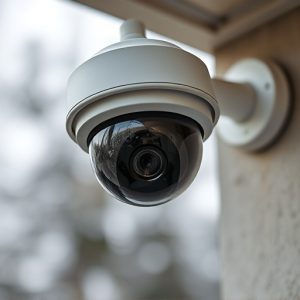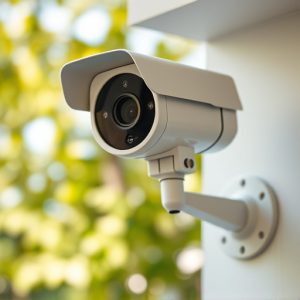Weatherproof Outdoor Fake Security: Placement & Benefits Explained
Weatherproof dummy security cameras mimic real systems while adhering to specific height guidelines…….
Weatherproof dummy security cameras mimic real systems while adhering to specific height guidelines (10-12 feet) for optimal visibility without appearing obtrusive. Strategically placed at this elevation, they offer a comprehensive view, deterring intruders and capturing clear images, especially during daylight and low light. While effective as visible deterrents, dummy cameras have limitations; they don't always prevent crime and improper placement based on guidelines can reduce their effectiveness, potentially attracting unwanted attention or disrupting landscapes.
In today’s digital era, enhancing outdoor security without breaking the bank is a priority for many. Weatherproof outdoor fake security monitoring offers an affordable solution, but understanding its design and placement is key to effectiveness. This article delves into the essentials of weatherproof dummy security cameras, focusing on crucial aspects like camera height guidelines. By exploring the benefits and potential drawbacks, you’ll gain valuable insights to make informed decisions for your property’s security needs.
- Understanding Weatherproof Design for Outdoor Fake Security Cameras
- Choosing the Right Height: Dummy Camera Placement Guidelines
- Benefits and Potential Drawbacks of Outdoor Fake Security Monitoring
Understanding Weatherproof Design for Outdoor Fake Security Cameras
When it comes to outdoor fake security monitoring, weatherproof design is paramount. These cameras are intended to mimic real security systems, so they must withstand various environmental conditions. Weatherproofing ensures that the dummy security camera remains functional and unharmed in all types of weather, from heavy rain to blazing sun. This involves using materials and construction techniques that protect internal components from moisture, dust, and extreme temperatures.
Dummy security cameras should adhere to specific height guidelines for optimal visibility and effectiveness. Typically, placing them at eye level or slightly above ensures they capture clear, unobstructed views without appearing too obtrusive. Weatherproof designs incorporate these height considerations, offering a practical solution that blends seamlessly into any outdoor setting while providing the necessary level of protection against the elements.
Choosing the Right Height: Dummy Camera Placement Guidelines
When strategically placing dummy security cameras for outdoor spaces, one crucial factor is considering the optimal height to ensure maximum effectiveness. The recommended placement guidelines suggest positioning the cameras at a height ranging from 10 to 12 feet (approximately 3 to 3.6 meters). This elevated vantage point allows for a comprehensive view of the surrounding area, making it ideal for deterring potential intruders. By installing them at this height, you can capture a clear image of the landscape, including nearby roads, buildings, and other landmarks, providing valuable surveillance data.
Additionally, keeping the cameras at this suggested height enables easy visibility during daylight hours while also offering adequate coverage under low-light conditions. This range ensures that the cameras are visible enough to act as a deterrent without being too prominent, maintaining an discreet yet powerful security presence.
Benefits and Potential Drawbacks of Outdoor Fake Security Monitoring
While outdoor fake security monitoring cameras, or dummy cameras, offer numerous advantages for homeowners and businesses seeking to enhance their security, they also come with certain drawbacks that should be considered. One key benefit is their visibility as a deterrent; criminals are less likely to target properties equipped with these devices, often assuming them to be active surveillance systems. Additionally, dummy cameras can provide peace of mind by simulating a robust security setup without the associated costs and complexities of real surveillance equipment.
On the downside, these fake monitoring systems may not always prevent crimes entirely, as determined individuals could still attempt to break in despite the presence of visible cameras. Moreover, improper placement and low-quality designs can make them less effective; following dummy security camera height guidelines is essential for optimal visibility and realism. Users must also be mindful that authentic-looking cameras, if placed poorly, might draw unwanted attention from passersby or cause aesthetic disruptions to a property’s landscape.
When selecting a dummy security camera, consider both its weatherproof design and optimal placement at the recommended height for maximum effectiveness. By adhering to these guidelines, you can enjoy enhanced outdoor security without breaking the bank. Remember, while fake cameras alone may not deter all potential intruders, they serve as a powerful visual deterrent and can be an affordable first line of defense for your property.


